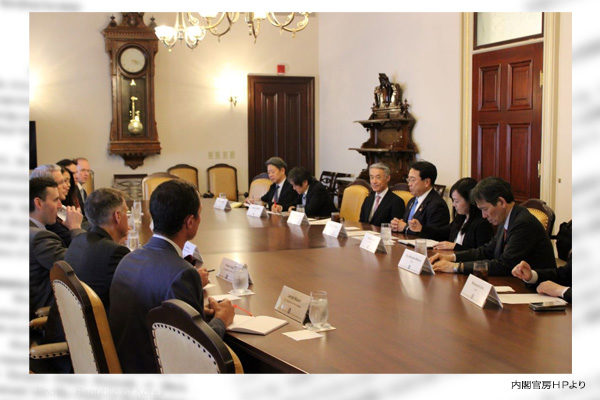Japan-U.S. tariff negotiations reportedly reached an agreement on July 23, leading the United States to put new tariffs into effect on August 7. However, it has turned out that there were differences in understanding about the agreement between Japan and the U.S. One of the differences was over whether or not 15% reciprocal tariffs introduced unilaterally by the U.S. Trump administration to allegedly equalize terms of trade will be added to conventional tariffs that are nondiscriminatory, if conventional tariffs are 15% or higher. There was no difference over a plan to raise less-than-15% conventional tariffs to a uniform 15%.
While Japan understood that no reciprocal tariff will be imposed if conventional tariffs are 15% or more, the U.S. treated 15% reciprocal tariffs as being added to such conventional tariffs. On the other hand, the U.S. and the European Union reached a tariff agreement on August 21 and issued a joint statement, including the same understanding as Japan’s.
Eventually, the U.S. side admitted the treatment of Japan as a mistake and offered to give Japan the same treatment as for the EU. However, Washington has yet to revise a relevant executive order in line with the offer, leaving the reciprocal tariffs to be added to conventional tariffs at 15% or more.
No time schedule given for cutting auto tariffs
Although the U.S. has agreed with Japan and the EU to set U.S. auto tariffs at 15% including the conventional 2.5% tariff (for passenger cars), the 27.5% tariffs before the agreement remain in effect.
As for the timing to cut auto tariffs to 15%, the U.S.-EU joint statement clearly states that if the EU submits to the European Parliament a bill to eliminate or reduce tariffs on U.S. imports, the new tariff rate of 15% will be applied from the first day of the month for the submission. Since there is no written agreement of this kind between Japan and the U.S., the timing to apply the 15% auto tariffs for Japan remains unknown.
If the auto tariffs are cut to 15%, tariffs subject to the cut will be refunded to importers who pay tariffs. If importers are U.S. subsidiaries of Japanese exporters (such as Toyota Motor Corp.), there may be no problem. If not so, however, exporters and importers may have to make complex adjustments regarding tariff refunds.
EU won’t be directed what to invest
Under the tariff agreement with the U.S., Japan is to provide the U.S. with $550 billion in investment, loans, and credit guarantees through the Japan Bank for International Cooperation (JBIC) and other government-run financial institutions. If investment produces profits, the Japanese side receives only10% of the profits. According to the U.S. explanation, the funds can be spent as “directed by the United States.” However, specific spending schemes are left unknown, and the sum of $550 billion is excessive, given the past investment size.
Meanwhile, the U.S.-EU joint statement says that “European companies are expected to invest an additional $600 billion across strategic sectors in the U.S. through 2028.” It does not include such wording as “directed by the United States.”
In contrast to the U.S.-EU tariff agreement, the Japan-U.S. agreement remains at the level of a “basic agreement.” In the absence of any written agreement, it must be concluded that a complete tariff agreement has not yet been reached. Japan’s Shigeru Ishiba government bears a significant responsibility for such situation.
Etsuro Honda is a member of the Planning Committee of the Japan Institute for National Fundamentals and a former special adviser to the cabinet. He advised then Prime Minister Shinzo Abe for the success of Abenomics.


